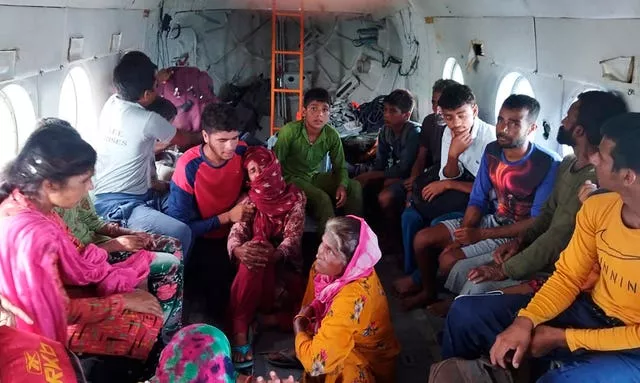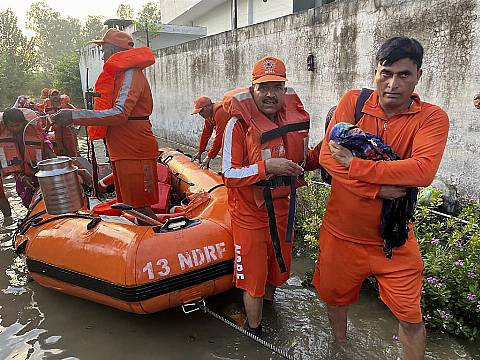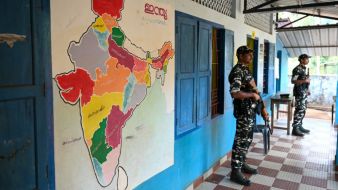Days of relentless rain in India’s Himalayan region have killed at least 72 people, a government official said on Thursday.
A heavy monsoon triggered landslides and flash floods that have submerged roads, washed away buildings and left residents scrambling for safety.
Rescuers in the mountainous Himachal Pradesh state have been working through challenging weather conditions to save people trapped under mud and debris from the rains that struck over the weekend.

India’s weather department has put the state on high alert and expects the downpours to continue over the next few days.
Vikram Singh, an operator at the state’s emergency operation centre, said that the 72 deaths occurred over the previous five days and that rescue work was ongoing.
Hundreds of roads remain blocked and schools in the capital city of Shimla have been ordered shut as the Indian Air Force and disaster response teams help evacuate people from low-lying, vulnerable areas.
The state’s chief minister, Sukhvinder Singh Sukhu, said more than 2,000 people have been rescued using helicopters and motor boats and are now safe in relief camps.
Visuals on social media showed trees falling apart as homes, built atop the hills, collapsed in succession. In the background, people can be heard crying out in horror, as they shouted “get out from here” and “get back”.
In Shimla, a Hindu temple collapsed amid deadly landslides, and authorities feared that people are still buried under the debris.

Authorities said the temple was crowded with devotees, raising fears that the death toll could rise as rescue work carries on.
Homes in some districts were also washed away after a cloudburst — a sudden, very heavy rain — on Sunday night left roads flooded and people stranded.
Cloudbursts are defined as when more than 10 centimetres (3.9 inches) of rainfall occurs within 10 square kilometres (3.8 square miles) within an hour. They are a common occurrence in Himalayan regions, where they have the potential to cause intense flooding and landslides affecting thousands of people.
Mr Sukhu, the chief minister, told the Press Trust of India news agency that it will take a year to rebuild infrastructure destroyed by the rains of this monsoon, and claimed the estimated loss to be about 100 billion rupees (£945 million).
“It is a big challenge, a mountain-like challenge,” he said.
Last month, record monsoon showers killed more than 100 people over two weeks in parts of northern India, including in Himachal Pradesh, which was the worst hit.

Disasters caused by landslides and floods are common in India’s Himalayan north during the June-September monsoon season.
Scientists say they are becoming more frequent as global warming increases.
However, local experts say the current disaster is likely due to unplanned construction in this vulnerable region.
“It is poor planning and governance that has led to this much damage,” said Anand Sharma, a retired meteorologist with the Indian Meteorological Department, the country’s weather agency.
Mr Sharma is from the Himalayan region and has closely observed weather patterns in this region for more than three decades.
He said the heavy and sometimes extreme rains is expected in the Himalayan foothills during the monsoon season.
“All the fallen buildings are those that were constructed recently, buildings built a 100 years ago have witnessed little to no damage,” he said, adding that growing tourism to the region is another factor.
“They build anywhere they like and when heavy rains occur, such disasters inevitably follow,” Mr Sharma said.







